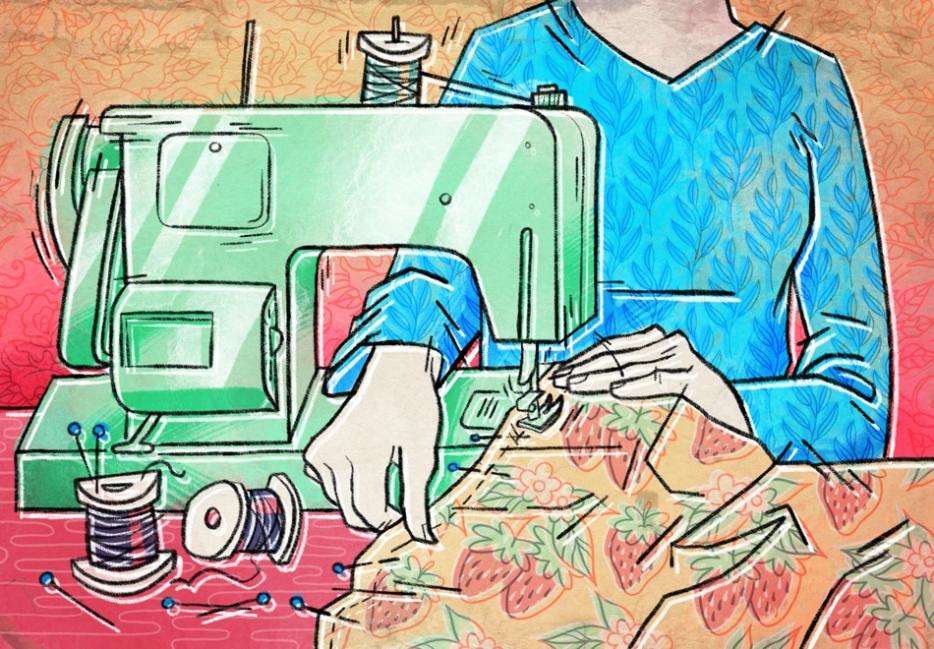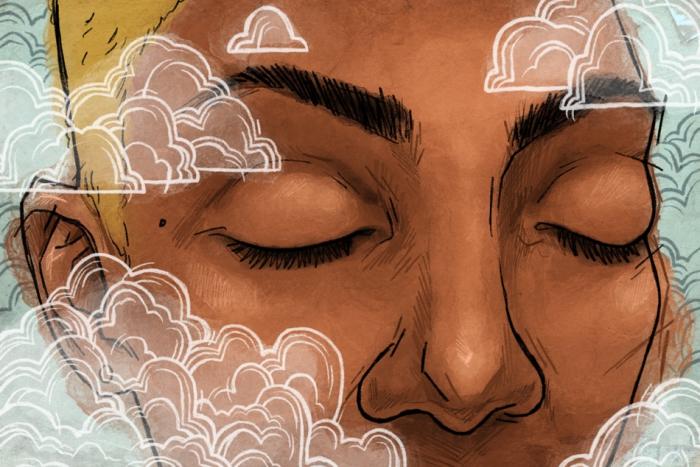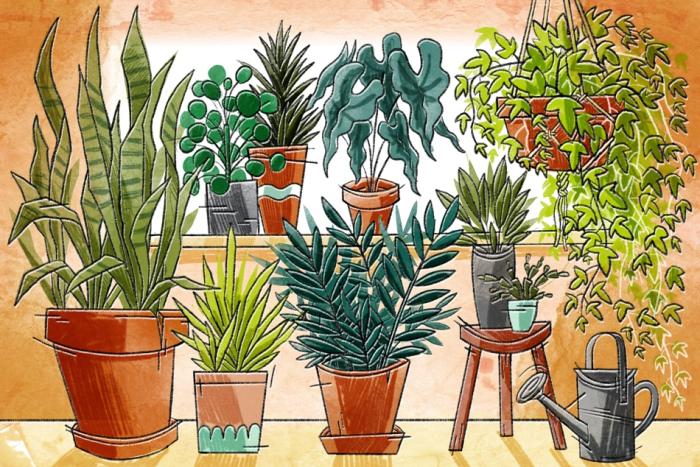What were we obsessed with, invested in and plagued by in 2019? Hazlitt’s writers reflect on the issues, big and small.
“Sylvia Plath loved to sew,” began my therapist’s email, some weeks after I attended our appointment wearing a freshly completed Wiksten Haori. She was referring to a New Yorker story by Dan Chiasson about Plath’s last letters, published in a new volume that includes correspondence either suppressed or ignored in previous edits of Plath’s work. I skimmed the article, which was full of the misdeeds and mysteries related to Plath’s short life; the posthumous tailoring of her output to protect the reputations of her surviving family, most notably, her husband Ted Hughes.
But I read with deep interest of Plath’s “new & exciting” sewing hobby, which I too had fallen hard for. “Plath had none of the leisure for contemplation that we associate with male writers,” writes Chiasson. “Her muses were economy, thrift, and the clock.” One day, “cowlike and cabbagey” after Frieda’s birth, Plath went downtown and “bought three 2-yard lengths of material” and a Simplicity sewing pattern.
It’s, well, funny to receive an email from a steward of one’s mental health pointing out the hobby of a poet associated quite closely with her suicide. But it articulates something about Plath that I’ve long struggled to reconcile in my own understanding of depression—namely the ease with which a chronic condition can feel like the thing one is, rather than a quality through which, at a given time, one might pass. As a person prone to variable periods of anxiety and depression, it reminded me that Plath had access to joy and optimism, perhaps even deepened by her knowledge of despair. Plath, despite the mental distress she presented so brutally in The Bell Jar, still found pleasure in buying fabric and sewing patterns and making dresses for her daughter. Sylvia Plath loved to sew. I also love to sew.
Based on little more than a wish to make my own ridiculously wide pants, I learned to sew at age 14 from a jocular nicotine chimney named Don. A towering ginger with red plastic glasses that dangled from a cord around his neck, I attended Don’s teen sewing class every Thursday, where I was often the only student, and usually stayed for the adult class that directly followed. When I try to remember what I learned in that class, I think it was mostly how fun it was to be with Don, who didn’t so much teach sewing as do our sewing for us. He helped me buy my first (and only) sewing machine: an unbreakable Janome RX18S that’s gone hard for twenty years, never more than in 2019. The light bulb hasn’t even burned out.
I stopped sewing for a very long time, doing it mostly when pants required shortening. Then, last winter, I found myself in a mentally deranging period of work-related stress. Riven with anxiety, I drifted into the Toronto fabric stores I had first discovered as a Modrobes-horny kid: King Textiles, with its sign-tossing sentry bellowing FaBrIc SaLe! at the corner of Queen and Spadina, as he has since the beginning of time. Affordable Textiles, which it is, and World Sew Centre, where they would check whether a fabric was cotton by setting a scrap of it on fire. Fabric stores are subject to an uncommon entropy. Somehow, twenty years later, they all look, smell, and sound the same. These stores, due to the dampening factor of all the fabric bolts, have an uncanny lack of acoustics. Someone talking to you from six feet away will appear to be on mute, lip-synching to nothing. That kind of quiet is healing.
My first item of clothing sewn and completed this year was a stretch velvet t-shirt that a friend of mine had requested. It took me a month to make it, a very simple garment, ultimately overworked and clumsily finished. But when it was, I felt the clearest form of happiness I’d experienced in years. As 2019 began, I was full of ideas, revived curiosity, absolutely hectic with interest in YouTube pleating demos and vintage Issey Miyake sewing patterns on Etsy. I hung a pegboard to organize my growing collection of tools; acquired a self-healing cutting mat and a rotary knife and a tailor’s ham and a seam gauge and a point turner and a blind hem foot—accessories that grew from the projects that I was teaching myself to do. I repeated the brand names aloud for their absolute non-descriptness: Dritz. Olfa. Brother. Singer. I bought a heavy Black & Decker iron that has seared the flesh of my inner arms with its point multiple times, causing a minor airshow of little pink triangles that I dab with Lucas’ Papaw Ointment. One piece of advice to any sewer: get a good steaming iron. The heavier, the better.
The passionate assumption of a hobby led, in my case, to spending money on things that I convinced myself I needed. As spring approached, I worried that my desire to sew and sew and sew was producing waste I could not defend, even with my happiness. So I took a break from the peaceful glut of the Queen West fabric stores and began thrifting old quilts and bed linens; learned to dye them with synthetic and eventually natural pigments—indigo, osage, madder, goldenrod. Adding iron to most, if not all natural dyes will darken the shade, a process known as saddening.
As stories like Natalie Kitroeff's investigation into Fashion Nova's laissez-faire exploitation of their workers, or Uniqlo's refusal to pay $5.5 million in wages to workers after the sudden closure of an Indonesian factory emerge, the ethics of fast fashion continue to shape how we evaluate the clothes we choose to wear. I can’t say that I started my obsession with sewing this way, but seeing how long it takes me to make a pair of shorts produces a visceral understanding of just how undercompensated most overseas—and in the case of Fashion Nova, domestic—garment workers are.
Very often as I am writing something, I will rise from my keyboard, moving to the corner in the back of my apartment where my sewing machine, my new overlock machine, my shears and bobbins and French curves are all in a state of readiness. Within minutes my iron is hissing and I am cutting out a shirt or a dress. Sewing is slow but steady. Its products grow from the fibrously small into something that you can button up or down. I will just as quickly rise from my sewing machine and walk back to my computer to type something that entered my brain while hemming a sleeve. It becomes appealing to look at a Word doc as something tactile and slow growing. Distracted by the certainty of a garment, my mind is free to write without the smothering observations of ego. And so I type it quickly, before I can decide that it sucks. I feel most at peace while traveling between one machine and the other, because I know I will have something exact to do when I arrive at either.
In university, I did an interview with the playwright and mathematician John Mighton. In that conversation, he told me that he taught himself to write by taking apart the poems of Sylvia Plath. I have nothing new to add about Plath, the writer. I admire Ariel and The Bell Jar and thinking too much about her life as I mostly know it makes me sad. But thinking about Sylvia Plath, the seamstress, makes me happy—because I know how happy sewing makes me. Something soft to lay her hands on. That Mighton found her poems to be worthy garments to learn from is apt, although any and all writers can be treated the same. Isn’t that how we all teach ourselves to write? Take it apart; see how to hide or show the seams as the one you love did.
In the past year, my sewing has improved vastly, to the point that I now know how much of an amateur I still am. I have made jackets and coats and skirts and pants and curtains and dresses and a baby-sized version of Bjork’s swan dress. I’ve gotten faster and better, and then smug, and made mistakes that require hours of fixing that sometimes can’t be fixed. If my mood is low, the task of threading a needle is a momentary sideline from a feeling that might otherwise darken me completely, iron in the dye bath. Sometimes that is enough, and mostly, as this new decade approaches, I find peace in enough.
As described in her letters, Plath’s goal was to publish enough poetry to buy her own sewing machine. “I am awfully proud of making clothes for little Frieda,” she wrote in her letters, which prompted more poetry, writes Chiasson. “She wrote the poems that allowed her to buy the machine, which, in turn, shows up in a poem.”
Is this love then, this red material
Issuing from the steel needle that flies so blindingly?
It will make little dresses and coats,
It will cover a dynasty.






